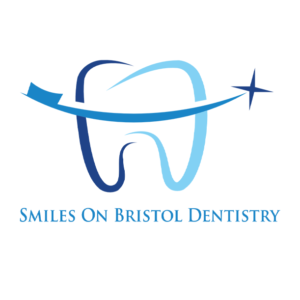According to dentists Dr. Daniel Kalantari and Dr. Arcila of Smiles on Bristol Dentistry, when many patients are told they need dental surgery, they often have no idea what that means for them. There are a number of different types of dental surgery. A good dentist will walk a patient through all the information before surgery, but in case they do not or patients have further questions, the dentists from Smiles on Bristol Dentistry recommend patients to do their own research.
Santa Ana Smiles On Bristol Dentistry’s key dentist, Dr. Danial Kalantari, explains that there are five major categories of dental surgeries: Endodontic, Prosthodontics, Orthodontic, Periodontic, and Oral and Maxillofacial Surgery. Endodontic procedures refer to surgeries involving the root of the tooth. This includes root canals and apicoectomy. Every tooth in the mouth has a hollow portion and these are called the root canals. In the canals are nerves, connective tissue, and blood vessels. These materials are called dental pulp and are what keeps the tooth alive. When this dental pulp because infected or inflamed, often due to a nearby cavity, dentists usually perform a Pulpotomy and Pulpectomy. In a pulpotomy, the dentist opens the tooth to clean out an infection or ease inflammation of the pulp. When this is not enough, they will perfom a pulpectomy where they remove diseased pulp from the tooth and leave the healthy pulp intact. They will then apply a medical filling to the tooth to protect the healthy pulp.
When this is not enough, Santa Ana dentists will perform a full root canal, also called endodontic therapy. This involves opening the tooth and removing all the pulp in the tooth. Dentists will make sure to clear all the canals in the tooth of infection. Once santizied, they will fill all the canals of the tooth with an inert substance such as dental cement. This procedure is used for teeth with deep infections, teeth with a strong likely hood of cracking, and teeth that have a high chance of becoming infected again. The last step dentists will usually perform to further protect the tooth is to cover the tooth with a crown to further seal it. If a root canal ends up not being enough for the tooth, dentists may then try apicoectomy where they remove the roots of the teeth and replace it with a biocompatible material.
The next type of dental surgery by Santa Ana dentist, Dr. Kalantari is Prosthodontics which covers dental prosthetics. This includes crowns, veneers, bridges, implants, dentures, and implant-supported prosthesis. Crowns are a way to cap the teeth to seal them, reshape them, and protect them from damage. They are usually made of ceramic, porcelain, gold or a tin/aluminum combination. They are fit over the original tooth, but the tooth must be reshaped to accommodate the crown. Veneers are very similar to crowns, except they only cover the front of the tooth and are most often done for aesthetic purposes.
Bridges are used to replace missing teeth, often after an extraction of a permanent tooth. They are made up on two or more connected crowns to “bridge” across the gap and fill the space of the missing tooth. Another way to replace missing teeth is with a dental implant. Dentists place a titanium support into the jaw bone and then the area is let to heal for 4-6 months. After the healing period an artificial tooth is permanently affixed to the titanium rod either with cement or with a screw.
One of the most well-known dental prosthetics and the most common way to replace a large amount of teeth is with dentures. Dentures are made up of multiple artificial teeth and can be attached to the mouth either with metal or plastic pieces that attach to the neighboring teeth or with adhesive that attach the dentures to the gums or palate.
The last type of dental prosthetics is a combination of dentures and dental implants called implant-supported prosthesis. Again, metal supports are put into the jaw and after the area has healed, dentists affix dentures across the multiple supports.
Orthodontic treatment is another area of dental surgery. The prefix ortho- means straight, upright. Orthodontics refers to straightening the teeth and moving them to their correct place. Orthodontic surgery covers any dental surgery that helps to properly align the teeth which can include veneers, implants, and dentures. It can also cover extractions of the teeth particularly that of the wisdom teeth. The wisdom teeth often push the normal adult teeth out of position and can cause numerous other problems, therefore most people have their wisdom teeth removed.
Another orthodontic surgery is called fiberotomy where a dentist cuts the gum fibers around a tooth to help prevent the gum from pulling a tooth that has been aligned with orthodontic braces back out of position. It is most often perform on teeth that have had to be rotated with braces. The fibers that hold the tooth then get pulled into a twisted position. After the braces are removed, many times those pulled fibers will try to return to their original position and pull the tooth back. Cutting the fibers is an effective way to prevent this relapse.
Periodontal surgeries involve the structures that support the teeth including the gums, alveolar bone, cementum, and the periodontal ligament. This can include gum grafts, gum trimming, removal of infections and others. Periodontal surgeries can also overlap other dental surgeries when the periodontal structure have become infected as well or are needed to be manipulated to allow for a certain surgery.
The last area of dental surgery is oral and maxillofacial. This area does not just cover the mouth, but also pertains to the jaw, face, head, neck, and hard and soft tissues of the mouth. This area covers a huge range of surgeries that range from cosmetic surgeries such as browlifts and lip enhancements, to more serious treatments such as bone grafts, difficult tooth extractions, fixing cleft palates, and removing cysts and tumors.


